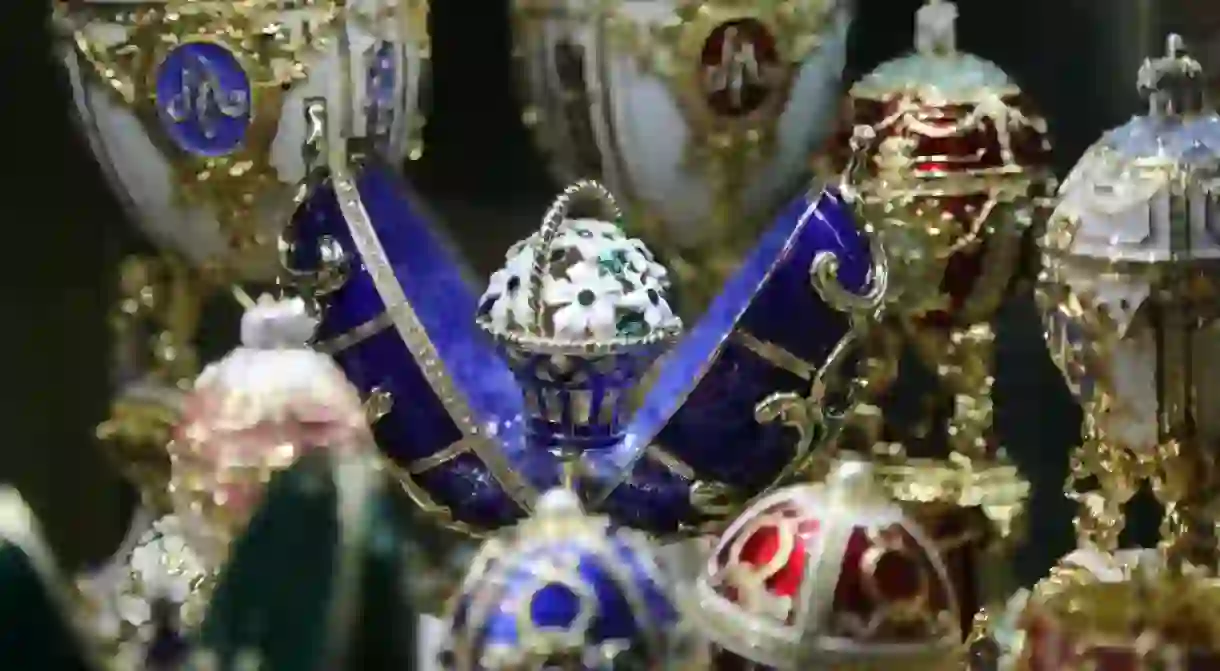Where to See the Last Imperial Fabergé Eggs Around the World

The Russian royal family took their Easter eggs more seriously than most. Easter was a time of jubilant celebration for the ill-fated clan who inspired some of history’s most exquisite examples of objet d’art. Imperial Easter eggs were exclusively commissioned by the Romanov royals, and expertly crafted by the House of Fabergé. Only 50 imperial Fabergé eggs were ever made, and 43 survive. Gaze upon some of the world’s finest luxury craftsmanship at these nine museums.
Fabergé Museum, St Petersburg, Russia
Museum

Royal Collection Trust, London, England
Art Gallery
The British royal family has been collecting Fabergé objects since the days of King Edward VII and Queen Alexandra. While the jewelry house was lesser-known in the United States until the 1930s, European royal families had been exchanging Fabergé gifts since the late 1800s. Queen Alexandra was purportedly “one of Fabergé’s greatest supporters,” regularly exchanging their products as birthday and Christmas gifts. The King and Queen subsequently purchased three imperial Easter eggs, on view at the Royal Collection Trust in London: the magnificent Colonnade Egg Clock made with gold in four colors, platinum, and rose diamonds; the delicate Basket of Flowers Egg made from silver, gold, blue enamel, and diamonds; and the exquisite Mosaic Egg, made of intricate bits of gold, platinum, pink and clear diamonds, rubies, emeralds, sapphires, and moonstone.
Virginia Museum of Fine Arts, Richmond, USA
Museum

Cleveland Museum of Art, Cleveland, USA
Museum

Kremlin Armory, Moscow, Russia
Historical Landmark

Fabergé Museum, Baden-Baden, Germany
Museum
The Walters Art Museum, Baltimore, USA
Museum
Metropolitan Museum of Art, New York City, USA
Museum, Park, Shop, Church, Building, Theater, Art Gallery













